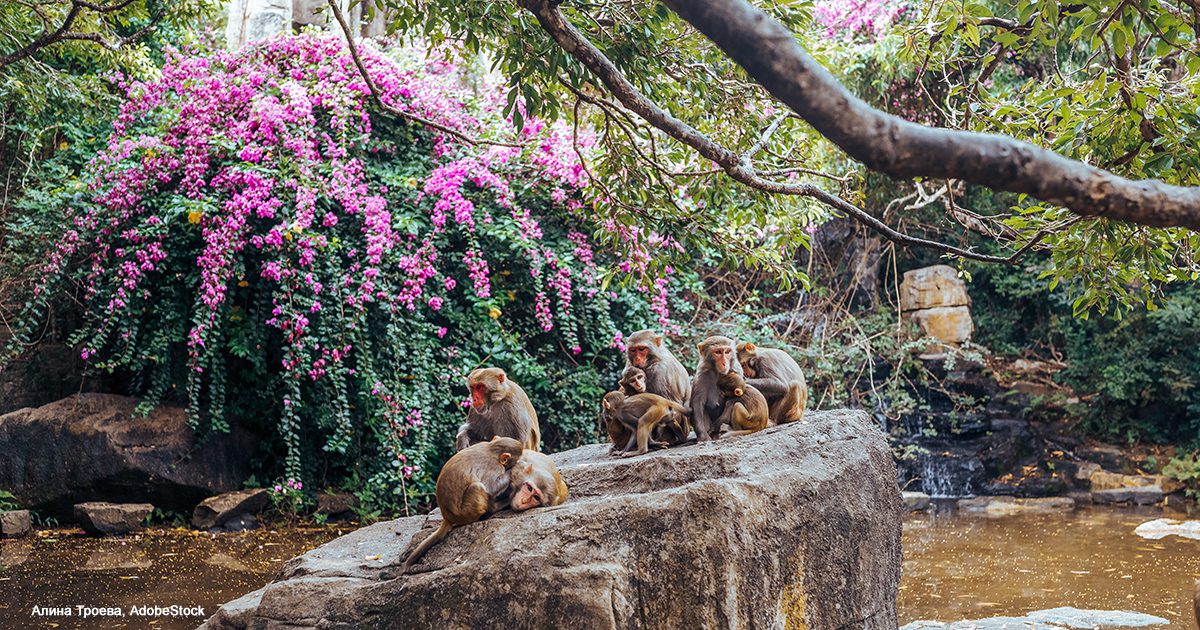
Sep 14, 2023 Monkey Business
According to reports by the US National Academy of Sciences and the European Commission, published in May this year, the US and Europe are experiencing an acute shortage of monkeys available for medical research, vaccine development, and product testing.
Medical research using primates began in the 1920s. Robert Yerkes at Yale University set up a laboratory for research using primates in the 1920s in America. However, it was not until the National Foundation for Infantile Paralysis (NFIP – also known as the March of Dimes) was founded in 1938 to launch a search for a vaccine against polio that non-human primates became widely available for laboratory research. Hundreds of thousands of monkeys, mostly rhesus macaques, were imported into the US in the 1950s to support the search for a vaccine against polio. NFIP also raised millions of dollars to develop the Salk polio vaccine (based on inactivated poliovirus particles), followed shortly afterward by the Sabin vaccine (based on a weakened live polio virus that did not cause disease).
The polio vaccine project needed monkeys because the polio virus did not infect the laboratory rodents and rabbits commonly available in the 1950s. India was initially the primary source of the macaque monkeys used in polio research. However, there were ongoing concerns about the need for laboratory monkeys because of their cost, public health concerns, and worries about the stability of the monkey supply chain. India briefly halted the export of monkeys in the mid-1950s. Still, scientists persuaded India to restore the monkey shipments with the proviso that a US diplomat would sign off on each shipment that the monkeys would be used only for critical medical research.
Because of concerns about the monkey supply, the NFIP supported various projects that had the potential to replace monkeys in poliovirus research. For example, a Minneapolis Sunday Tribune story in January 1954 was headlined “Human Cancer Cells Now SPARE THE MONKEY.” The report included a photograph of a seated Dr. Jerome Syverton behind a test tube holder containing eight test tubes of human cancer cells. At the same time, four assistants held eight monkeys to dramatize the replacement of monkeys by human cell cultures. A few years earlier, in 1949, a group of Boston researchers published a report describing their success in growing poliovirus in normal human cells. This development was awarded the 1954 Nobel Prize in Medicine.
Laboratory primate research in the US received an additional stimulus after the Russians launched the Sputnik satellite in the late 1950s. The Russian success in first reaching space led to concerns that the US might have fallen behind Russian science. As a result, a few astute American science advocates argued that, since the Russians had established a primate research center in Sukhumi in the 1920s, the US also needed such a research center. The US Congress accepted the argument and provided funding for not one but seven primate research centers in the early 1960s. The primate centers were tasked with establishing domestic breeding programs for rhesus macaques after India permanently canceled the export of macaques in 1978.
There were periodic concerns that the centers were not producing adequate value for the funds invested in them, and two evaluation studies (in 1976 and 1979) supported these concerns. But the discovery in the early 1980s that several centers housed monkeys that were infected with a Simian Immunodeficiency Virus (the monkey version of the AIDS epidemic that emerged in June of 1981 in the US and spread across the globe) supported those who argued that the primate centers were a vital public health resource. Ironically, an animal rights campaign by the Mobilization for Animals targeting the primate centers in the early 1980s as expensive white elephants also led to additional Congressional funding for primate research. Medical research advocates successfully argued that the primate centers were a vital resource threatened by the animal rights movement.
The current shortage of laboratory primates is partly a consequence of China recently stopping the export of cynomolgus macaques to the US and the EU, apparently to develop its primate research infrastructure. As long as there were relatively cheap sources of wild-caught primates from India and China, expensive domestic breeding programs tended to be under-resourced. There have also been periodic reviews of the need for laboratory primate research in the US and the EU. Nearly all these reviews have concluded that primate research was vital to advancing human health. However, the US National Academy of Sciences review of the need for laboratory chimpanzee research concluded that it was not as essential for human health as had been argued.
It is likely that as non-human primates become much more expensive (the price of a typical laboratory monkey has tripled in the past year), non-human primates in laboratories will increasingly be replaced by the up-and-coming new micro-physiological technologies such as the organs-on-a-chip and brain organoid systems employing human cell cultures. The recent report by the US National Academy of Sciences on primate supply specifically included a review of the potential of New Approach Methods (or NAMS) to replace future research on non-human primates as did a 2017 European Commission report. NAMs may not be able to replace non-human primates yet, but the recent technologies in development are very promising!
_________________________________________________________
For more information on the history of primate use in medical research and vaccine development, please see the WBI recording of a presentation by Dr. Andrew Rowan to the 12th World Congress on Alternatives and Animal Use in the Life Sciences, held in August 2023.


